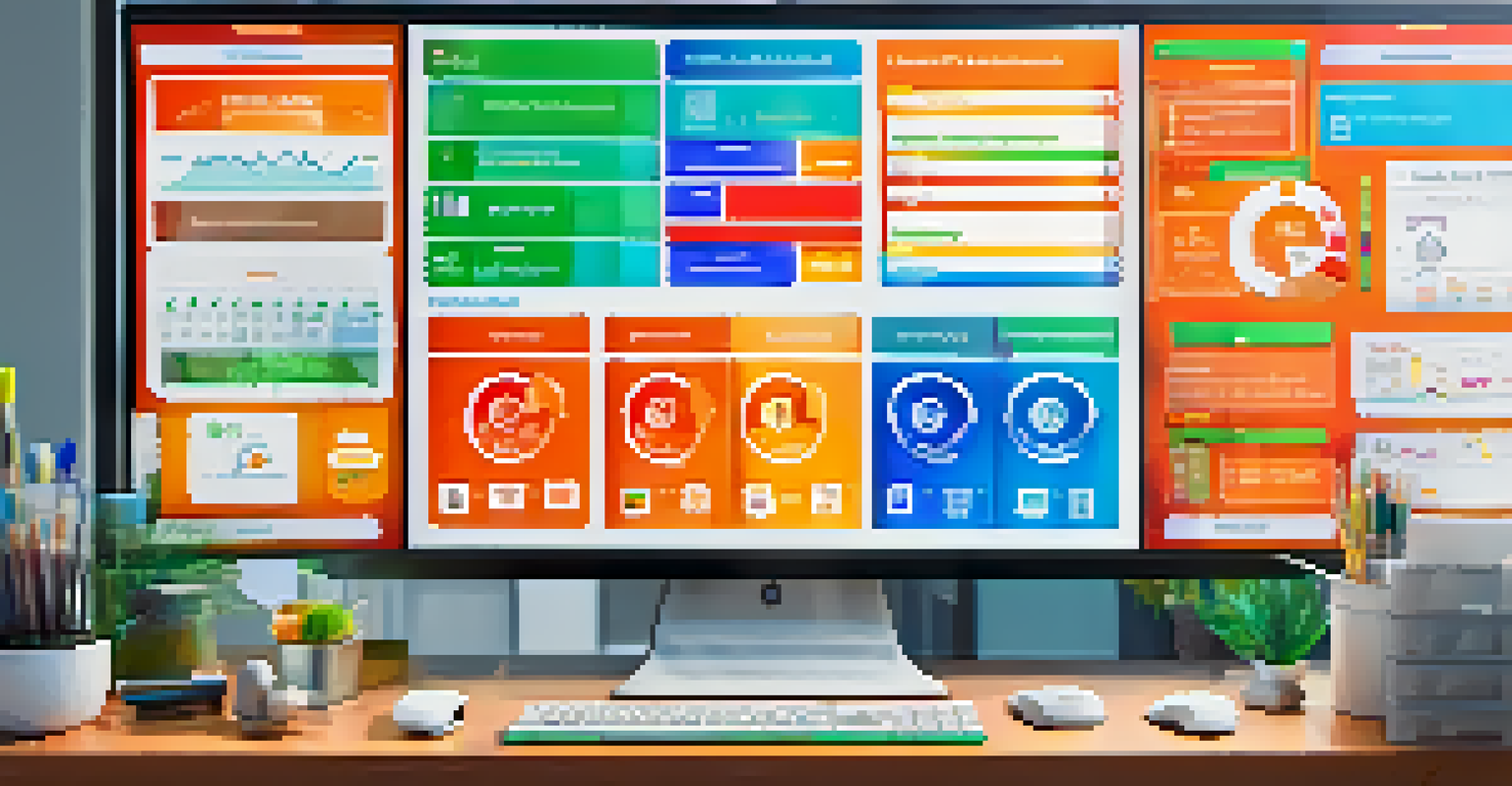Microlearning Assessment: Measuring Learner Progress

Understanding Microlearning and Its Benefits
Microlearning is an educational approach that delivers content in bite-sized formats, making it easier for learners to absorb information. This method caters to our fast-paced lifestyles, allowing individuals to engage with learning materials anytime and anywhere. By breaking down complex topics into smaller, manageable segments, microlearning enhances retention and boosts engagement.
The only thing worse than training your employees and having them leave is not training them and having them stay.
This approach not only supports immediate knowledge application but also fosters continuous learning. For instance, a busy professional might opt for a quick video on leadership skills rather than attending a lengthy seminar. The flexibility of microlearning is a game-changer in today’s educational landscape, making it increasingly popular across various industries.
Moreover, microlearning complements traditional learning methods by integrating seamlessly into existing frameworks. It can be utilized for just-in-time training, helping employees access relevant information when they need it most. This adaptability is what makes microlearning a vital component of modern educational strategies.
The Importance of Assessment in Microlearning
Assessment plays a crucial role in any learning process, and microlearning is no exception. By measuring learner progress, organizations can identify knowledge gaps and tailor content to meet specific needs. Without effective assessment, it’s challenging to determine whether the microlearning initiatives are achieving their objectives.

Furthermore, assessments provide valuable feedback to learners, helping them understand their strengths and areas for improvement. This kind of reflection encourages a growth mindset, motivating individuals to continue their learning journey. For example, a simple quiz at the end of a microlearning module can reinforce key concepts and boost confidence.
Microlearning Enhances Retention
By breaking down complex topics into bite-sized segments, microlearning makes information easier to absorb and remember.
Additionally, assessments can inform instructional design, allowing educators to refine their approaches based on learner performance. By analyzing assessment data, organizations can enhance future microlearning experiences, ensuring they remain relevant and impactful. Ultimately, effective assessment drives the success of microlearning initiatives.
Types of Assessments for Microlearning
There are various types of assessments that can be effectively integrated into microlearning programs. Quizzes and polls are popular choices, as they are quick to administer and provide immediate feedback. These tools help learners gauge their understanding and retain information better, making the learning experience more interactive.
Learning is a treasure that will follow its owner everywhere.
Another effective assessment method is scenario-based learning, where learners are presented with real-life situations to apply their knowledge. This type of assessment encourages critical thinking and problem-solving skills, preparing individuals for practical challenges in their roles. For instance, a sales team might engage in role-playing exercises to enhance their negotiation skills.
Finally, peer assessments can foster collaboration and community among learners. By encouraging individuals to evaluate each other's work, organizations create a sense of accountability and motivate learners to engage more deeply with the content. This approach not only strengthens understanding but also builds a supportive learning environment.
Utilizing Technology for Microlearning Assessment
Technology plays a pivotal role in enhancing microlearning assessments. Learning management systems (LMS) offer features that allow for the creation and distribution of assessments seamlessly. These platforms enable real-time tracking of learner progress, making it easier to identify trends and areas needing attention.
Moreover, mobile apps have transformed the way assessments are administered. With learners able to access content on their devices, assessments can be taken on-the-go, fitting into their busy schedules. This convenience is crucial for maintaining engagement and ensuring learners can complete assessments without added pressure.
Assessment Drives Learning Success
Effective assessments are crucial for identifying knowledge gaps and providing feedback that fosters continuous improvement.
Additionally, data analytics tools can provide deeper insights into learner performance. By analyzing patterns and behaviors, organizations can refine their microlearning strategies and improve assessment techniques. This data-driven approach ensures that microlearning remains effective and aligned with organizational goals.
Best Practices for Conducting Microlearning Assessments
Implementing best practices can significantly enhance the effectiveness of microlearning assessments. First, assessments should be aligned with learning objectives, ensuring they measure what learners are expected to know. This alignment guarantees that the assessment is relevant and meaningful to the learner's experience.
Secondly, assessments should be varied and engaging to maintain learner interest. Incorporating different formats, such as interactive quizzes, video assessments, or discussions, can cater to diverse learning preferences. This variety not only keeps learners engaged but also allows for a more comprehensive evaluation of their understanding.
Lastly, providing timely feedback is crucial for learner growth. Feedback should be constructive and specific, guiding learners on how to improve their knowledge and skills. When learners receive prompt feedback, they can make adjustments and continue their learning journey with confidence.
Evaluating the Effectiveness of Assessments
To ensure microlearning assessments are effective, organizations must regularly evaluate their impact. This involves analyzing assessment results to determine if learners are meeting the desired outcomes. If learners are struggling with certain concepts, it may indicate the need for adjusted content or additional support.
Additionally, gathering learner feedback on the assessment process can provide valuable insights. Understanding how learners perceive the assessments can help refine approaches and enhance engagement. For example, if learners find quizzes too challenging or time-consuming, adjustments can be made for a better experience.
Technology Transforms Assessments
Utilizing technology like LMS and mobile apps facilitates seamless assessments, allowing learners to engage anytime and anywhere.
Moreover, comparing performance data over time can reveal trends and improvements. By tracking progress, organizations can assess the overall effectiveness of their microlearning initiatives and make informed decisions about future training strategies. Continuous evaluation ensures that microlearning remains relevant and impactful.
Future Trends in Microlearning Assessment
The landscape of microlearning assessment is constantly evolving, with new trends emerging regularly. One notable trend is the integration of gamification in assessments, making learning more enjoyable and motivating. By incorporating game-like elements, such as rewards or leaderboards, organizations can foster healthy competition and enhance learner engagement.
Another trend is the use of artificial intelligence (AI) to personalize assessments. AI can analyze learner data to provide tailored questions and feedback, creating a more customized learning experience. This level of personalization helps address individual learner needs, ensuring they receive the support necessary to succeed.

Lastly, we can expect a rise in collaborative assessments as organizations increasingly recognize the value of teamwork. Group assessments can encourage communication, problem-solving, and critical thinking among learners. As we move forward, these trends will shape the future of microlearning assessments, making them more effective and engaging.